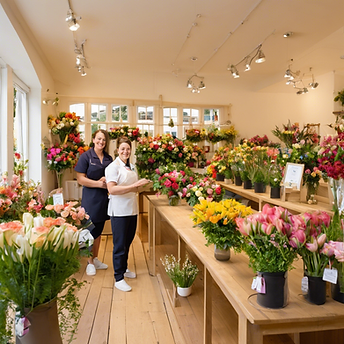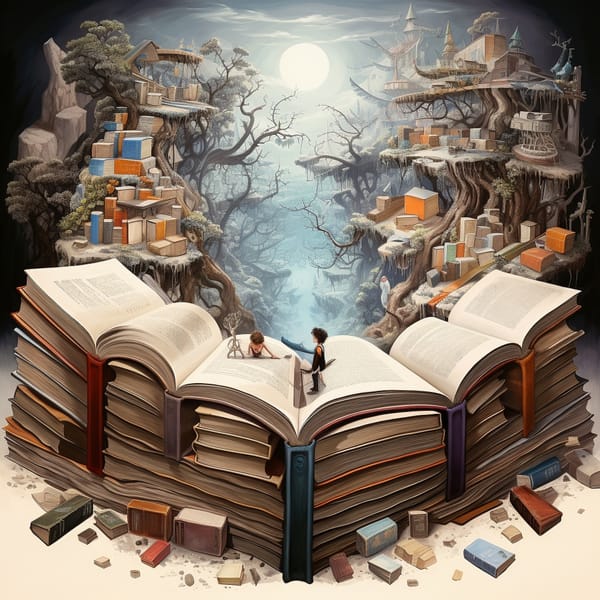Blooming Tales: How Storytelling Makes a Florist Blossom
In a world where flowers can be ordered with a click of a button from impersonal online giants, it's your stories that can set you apart, create emotional connections, and make your blooms not just purchases, but experiences.

In a world where flowers can be ordered with a click of a button from impersonal online giants, it's your stories that can set you apart, create emotional connections, and make your blooms not just purchases, but experiences.
Whether you're a freelance florist working from your home studio or the proud owner of a small flower shop, storytelling can be the secret fertiliser that helps your business grow and flourish. Let's dig in and discover how you can weave narratives that will make your floral designs even more enchanting.
Why Storytelling Matters in Floristry
Flowers themselves tell stories—of love, sympathy, celebration, and remembrance. As a florist, you're already in the business of helping people express emotions through your arrangements. Storytelling simply extends this natural role, adding depth and meaning to your work.
Here's why storytelling is particularly powerful for florists:
- Emotional Connection: Flowers are inherently emotional purchases. Stories can deepen this emotional resonance, making your arrangements more meaningful to customers.
- Differentiation: In a market where flowers can seem like a commodity, your unique stories set you apart from big-box stores and online retailers.
- Justification of Value: Stories can help customers understand and appreciate the value of your work, justifying premium prices for your artistry.
- Memorability: A bouquet might last a week, but a good story can stay with a customer for years, encouraging repeat business.
- Brand Building: Consistent storytelling helps build a strong, recognizable brand, even for freelance florists.
Storytelling Techniques for Florists
Now, let's explore some specific storytelling techniques you can use to make your floristry business bloom:
1. The Origin Story: From Seed to Bouquet
Share your flowers' journey from their origins to the final arrangement. This could include:
- The family-run farm where your roses are grown.
- The sustainable practices used in cultivating your flowers.
- The early morning flower market trips you make to select each stem.
Example: "These peonies have travelled all the way from a small, family-owned farm in Berkshire. The family has been perfecting their peony cultivation for three generations, and their passion shows in each perfect bloom."
2. The Inspiration Narrative: Nature's Muse
Tell the story of what inspired a particular arrangement or your overall design philosophy.
Example: "This wildflower bouquet was inspired by a hike I took in the Lake District last spring. I was struck by how the seemingly random assortment of flowers created a harmonious, natural beauty. I've tried to recreate that feeling in this arrangement."
3. The Customer's Story: Flowers as Life Markers
Highlight how your flowers play a role in your customers' life stories.
Example: Create a "Wall of Love" in your shop or on your website, featuring photos and short stories from customers about the special moments your flowers have been a part of—from surprise proposals to milestone anniversaries.
4. The Artisan's Tale: Your Floral Journey
Share your personal story as a florist—what drew you to this art form, your training, your philosophy.
Example: "I fell in love with flowers as a child, helping my grandmother in her garden. Today, I bring that same sense of wonder and care to every arrangement I create."
5. The Language of Flowers: Reviving a Lost Art
Educate your customers about the traditional meanings of different flowers, adding an extra layer of significance to your arrangements.
Example: Include small cards with each bouquet explaining the symbolic meaning of the main flowers. "Red roses for passion, baby's breath for everlasting love, and a sprig of myrtle for good luck in marriage—the perfect combination for a romantic anniversary bouquet."
6. The Eco-Conscious Narrative: Sustainability in Bloom
If you use sustainable practices, make this a key part of your story.
Example: "We're committed to beauty that doesn't cost the earth. That's why we use locally grown, seasonal flowers and don't use floral foam in all our arrangements."
Bringing Your Stories to Life: Practical Tips for Florists
Now that we've explored some storytelling techniques, let's look at how you can practically implement these in your business:
1. In-Store Storytelling (for Shop Owners)
- Use small cards or QR codes next to arrangements to share their stories.
- Create a story-focused window display, perhaps showcasing the journey of a single type of flower.
- Host storytelling events, like an evening of "Flower Folklore and Wine".
2. Online Storytelling (for All Florists)
- Use your website's 'About' page to share your personal floristry journey.
- Create blog posts or social media series about the meaning of different flowers.
- Share behind-the-scenes stories of your process on Instagram Stories or TikTok.
3. Product Storytelling (for All Florists)
- Include story cards with each arrangement you sell.
- Name your signature arrangements after their inspiration or origin.
- Create themed collections with an overarching story (e.g., "The Meadow Collection," inspired by local wildflowers).
4. Community Storytelling (for All Florists)
- Partner with local businesses to tell collaborative stories (e.g., a baker and a florist creating a story-driven wedding package).
- Share stories of how your flowers have been part of local events or traditions.
- Invite customers to share their own stories of what your flowers have meant to them.
Measuring the Impact of Your Floral Tales
How do you know if your storytelling efforts are paying off? Look for these signs:
- Increased Social Media Engagement: Are people commenting and sharing your story-based posts?
- Customer Feedback: Are customers mentioning your stories when shopping?
- Press Coverage: Are local media picking up your unique approach?
- Repeat Business: Are customers coming back, asking for arrangements they've heard stories about?
- Price Resilience: Are customers willing to pay premium prices for your story-rich arrangements?
The Evergreen Story: Keeping Your Narrative Fresh
Remember, your story as a florist is ever-evolving. Here are some ways to keep your narrative fresh:
- Seasonal Stories: Align your stories with the changing seasons and the flowers they bring.
- Continuous Learning: Share stories about new techniques you're learning or experimenting with.
- Customer Co-creation: Invite customers to be part of your story by co-creating custom arrangements.
- Community Involvement: Tell stories about how your business is involved in and giving back to the local community.
The Final Arrangement: Your Story Awaits
In the end, as a florist, you're not just selling flowers—you're selling stories, emotions, and experiences. Your arrangements are the visual poetry that accompanies life's most significant moments. By embracing storytelling, you add another layer of meaning and beauty to your work.
So, whether you're a freelance florist or a small shop owner, it's time to start weaving your tales. Share the story of the dahlias that remind you of your grandmother's garden, the rose farmer who's become a dear friend, or the bride whose face lit up when she saw her perfect bouquet. These stories will set you apart, forge deeper connections with your customers, and help your business flourish.
Remember, in the garden of commerce, storytelling is the sunshine that can make your floristry business grow, bloom, and thrive. What story will you tell today?




